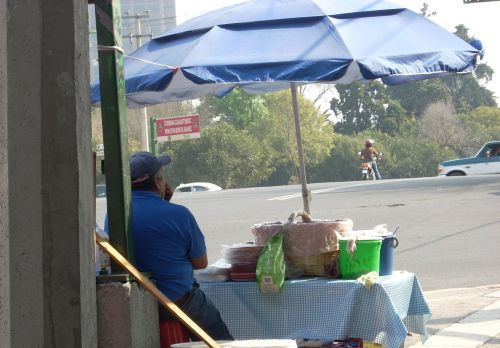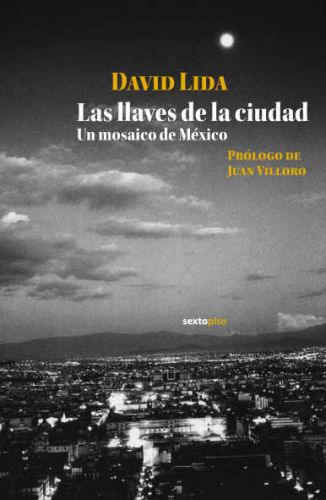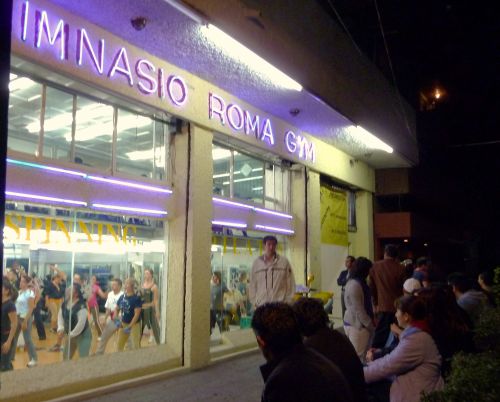It is the dream of every unskilled Mexican with no connections to establish a business selling food. Particularly profitable are stands on the street, because they require minimal investment and their owners are duty-bound to pay few taxes. Some don’t pay any at all.
The least adorned points of sale are those which dispense tacos sudados – sweaty tacos, so-called because after being fried in the morning, they sit steaming in a basket during the day until their vendors sell out. (They are also known as tacos de canasta, or tacos in a basket.) Most commonly stuffed with potatoes, beans, fried pork rinds or green mole, they are delicious and extremely cheap – usually 3.5 pesos, or about 23 cents U.S. at the current exchange rate.
Juan Monsalvo, the fellow who from whom I most commonly buy tacos sudados, reeks of humility. Missing a couple of front teeth, he is impeccably well-mannered and always speaks to his customers using the polite form of address. I once asked him how many tacos he sells a day. He said that on a good day he will sell out his ration of 250. At 3.50 pesos each, that represents gross earnings of over $50 US.
But then he told me that he gets up at four o’clock each morning and makes 2000 tacos. A phalanx of salesmen buy the rest from him at a peso each and vend them on their own streetcorners. His workday lasts twelve hours. Math is not my strong point, but I believe he makes more money than I do.






